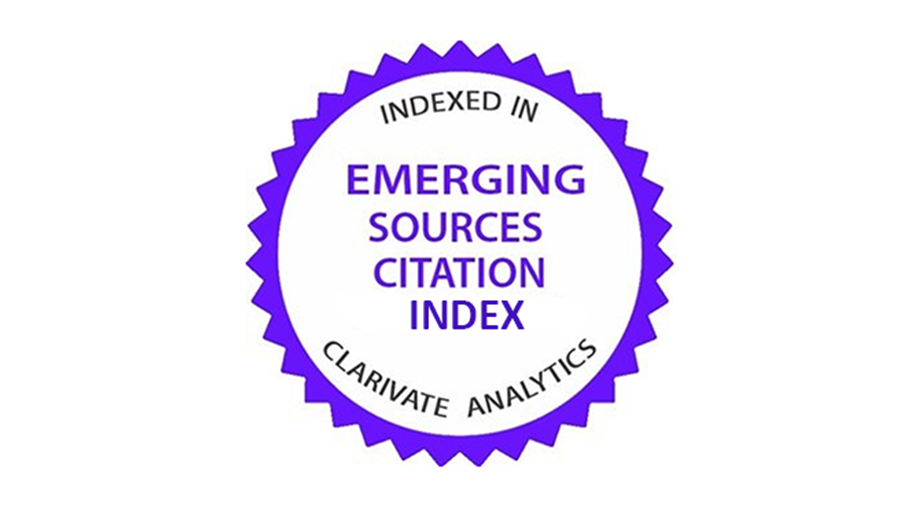Enhancing the Functional Biodiversity of Ground-Dwelling Arthropods with Henbit (Lamium amplexicaule) Conservation
Abstract
In European countries, considerable research has focused on the conservation and improvement of biodiversity of functional groups which are useful organisms in agricultural lands. In contrast, there is little research in this field in Asia. Living mulches using cover plants have been indicated to be an effective way to increase the density of functional groups in Europe. However, most of the living mulches used in Japan are non-native species native to Europe. There is concern that these alien plants may have a negative impact on the functional groups of native organisms. In this study, researchers investigated the impact of a community of henbit (Lamium amplexicaule), a winter weed native to Japan, on the maintenance of functional ground-dwelling arthropods. In a study of vegetable fields grown with radishes, Chinese cabbage, and onions, plastic mulch, henbit communities, and weeding areas were compared. In vegetable fields, henbit communities increased the number of functional arthropods, including carnivorous native enemies and weed seed predators, compared with plastic mulched or weeding bare ground. Weeds were removed from vegetable fields, whereas the undergrowth was often managed in tree orchards to prevent soil erosion. In a chestnut orchard study, a henbit-dominated area was compared with an area containing a mixed plant community. In the chestnut orchard, the area with henbit-dominant communities had more functional species than areas with other weed species. These results reveal that the henbit community has a positive effect on the maintenance of functional ground-dwelling arthropods.
Keywords
Full Text:
PDFReferences
Baraibar, B., White, C. M., Hunter, M. C., Finney, D. M., Barbercheck, M. E., Kaye, J. P., … & Mortensen, D. A. (2021). Weeds in cover crops: Context and management considerations. Agriculture, 11(3), 193. https://doi.org/10.3390/agriculture11030193
Barberi, P. (2015). Functional biodiversity in organic systems: The way forward? Sustainable Agriculture Research, 4(3), 26–31. https://doi.org/10.5539/sar.v4n3p26
Boetzl, F. A., Krauss, J., Heinze, J., Hoffmann, H., Juffa, J., König, S., ..., & Holzschuh, A. (2021). A multitaxa assessment of the effectiveness of agri-environmental schemes for biodiversity management. Proceedings of the National Academy of Sciences, 118(10), e2016038118. https://doi.org/10.1073/pnas.2016038118
Burgio, G., Kristensen, H. L., Campanelli, G., Bavec, F., Bavec, M., von Fragstein und Niemsdorff, P., ... & Canali, S. (2014). Effect of living mulch on pest/beneficial interaction. Building Organic Bridges, 3, 741–744. https://doi.org/10.3220/REP_20_1_2014
Collins, K. L., Boatman, N. D., Wilcox, A., & Holland, J. M. (2003). A 5-year comparison of overwintering polyphagous predator densities within a beetle bank and two conventional hedgebanks. Annals of Applied Biology, 143(1), 63–71. https://doi.org/10.1111/j.1744-7348.2003.tb00270.x
Depalo, L., Burgio, G., Magagnoli, S., Sommaggio, D., Montemurro, F., Canali, S., & Masetti, A. (2020). Influence of cover crop termination on ground dwelling arthropods in organic vegetable systems. Insects, 11(7), 445. https://doi.org/10.3390/insects11070445
Duru, M., Therond, O., Martin, G., Martin-Clouaire, R., Magne, M. A., Justes, E., ..., & Sarthou, J. P. (2015). How to implement biodiversity-based agriculture to enhance ecosystem services: A review. Agronomy for Sustainable Development, 35(4), 1259–1281. https://doi.org/10.1007/s13593-015-0306-1
Fiera, C., Ulrich, W., Popescu, D., Buchholz, J., Querner, P., Bunea, C., ..., & Zaller, J. G. (2020). Tillage intensity and herbicide application influence surface-active springtail (Collembola) communities in Romanian vineyards. Agriculture, Ecosystems & Environment, 300, 107006. https://doi.org/10.1016/j.agee.2020.107006
Hayashi, Y. (2013). Wild flowers in Japan, plants, seaside and hills. Yama-Kei Publishers, p161.
Holland, J. M., Bianchi, F. J., Entling, M. H., Moonen, C., Smith, B. M., & Jeanneret, P. (2016). Structure, function and management of semi-natural habitats for conservation biological control: A review of European studies. Pest Management Science, 72(9), 1638–1651. https://doi.org/10.1002/ps.4318
Ishitani, M. (2010). Evaluating ground beetles as indicator species to assess the environments. Japanese Journal of Environmental Entomology and Zoology, 21(2), 73–83. Retrieved from https://scholar.google.co.id/scholar?hl=id&as_sdt=0%2C5&q=Evaluating+ground+beetles+as+indicator+species+to+assess+the+environments&btnG=
Koprdová, S., Saska, P., Honěk, A., & Martinková, Z. (2010). Seed consumption by millipedes. Pedobiologia, 54(1), 31–36. https://doi.org/10.1016/j.pedobi.2010.08.005
Kulkarni, S. S., Dosdall, L. M., Spence, J. R., & Willenborg, C. J. (2016). Brassicaceous weed seed predation by ground beetles (Coleoptera: Carabidae). Weed Science, 64(2), 294–302. https://doi.org/10.1614/WS-D-15-00069.1
Laureto, L. M. O., Cianciaruso, M. V., & Samia, D. S. M. (2015). Functional diversity: An overview of its history and applicability. Natureza & Conservação, 13(2), 112–116. https://doi.org/10.1016/j.ncon.2015.11.001
Martin, E. A., Dainese, M., Clough, Y., Báldi, A., Bommarco, R., Gagic, V., ... & Steffan‐Dewenter, I. (2019). The interplay of landscape composition and configuration: New pathways to manage functional biodiversity and agroecosystem services across Europe. Ecology Letters, 22(7), 1083–1094. https://doi.org/10.1111/ele.13265
Ministry of Agriculture, Forestry and Fisheries of Japan. (2012). Indicator animals of functional agrobiodiversity: A survey and evaluation manual (in Japanese). Japan: Ministry of Agriculture, Forestry and Fisheries, National Institute for Agro-Environmental Sciences, & National Institute of Agrobiological Sciences. Retrieved from http://www.niaes.affrc.go.jp/techdoc/shihyo/
Ministry of Foreign Affairs of Japan. (2021). Convention on biological diversity (in Japanese). Japan: Ministry of Foreign Affairs. Retrieved from https://www.mofa.go.jp/mofaj/gaiko/kankyo/jyoyaku/bio.html
Perera-Fernández, L. G., de Pedro, L., & Sanchez, J. A. (2023). Sown covers enhance the diversity and abundance of ground-dwelling predators in Mediterranean pear orchards. Agronomy, 13(12), 3049. https://doi.org/10.3390/agronomy13123049
Šálek, M., Hula, V., Kipson, M., Daňková, R., Niedobová, J., & Gamero, A. (2018). Bringing diversity back to agriculture: Smaller fields and non-crop elements enhance biodiversity in intensively managed arable farmlands. Ecological Indicators, 90, 65–73. https://doi.org/10.1016/j.ecolind.2018.03.001
Samways, M. J., Caldwell, P., & Osborn, R. (1996). Ground-living invertebrate assemblages in native, planted and invasive vegetation in South Africa. Agriculture, Ecosystems & Environment, 59(1–2), 19–32. https://doi.org/10.1016/0167-8809(96)01047-X
Sarabi, V. (2019). Factors that influence the level of weed seed predation: A review. Weed Biology and Management, 19(3), 61–74. https://doi.org/10.1111/wbm.12186
Shibata, K. (2005). Utilization of cover crops in fruit tree cultivation. Japanese Journal of Farm Work Research, 40(1), 43–48. https://doi.org/10.4035/jsfwr.40.43
Shimizu, N. (1998). Recent situation of invasion and diffusion of alien weeds and its control. Japanese Journal of Ecology, 48(1), 79−85. Retrieved from https://www.cabidigitallibrary.org/doi/full/10.5555/19982303743
Snyder, W. E. (2019). Give predators a complement: Conserving natural enemy biodiversity to improve biocontrol. Biological Control, 135, 73–82. https://doi.org/10.1016/j.biocontrol.2019.04.017
Tallamy, D. W. (2004). Do alien plants reduce insect biomass? Conservation Biology, 18(6), 1689–1692. https://doi.org/3589055
Triquet, C., Roume, A., Tolon, V., Wezel, A., & Ferrer, A. (2022). Undestroyed winter cover crop strip in maize fields supports ground-dwelling arthropods and predation. Agriculture, Ecosystems & Environment, 326, 107783. https://doi.org/10.1016/j.agee.2021.107783
Uetz, G. W., & Unzicker, J. D. (1975). Pitfall trapping in ecological studies of wandering spiders. Journal of Arachnology, 3(2), 101–111. https://doi.org/3705290
Refbacks
- There are currently no refbacks.











